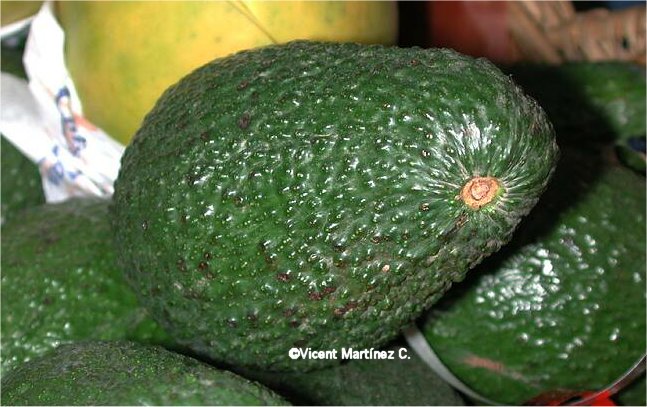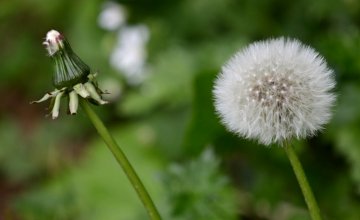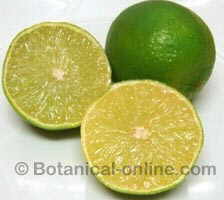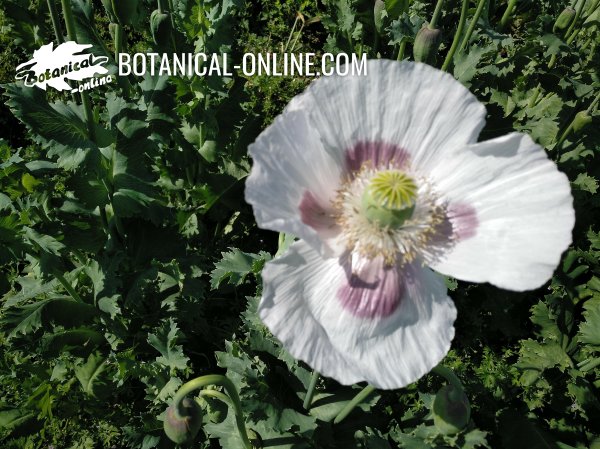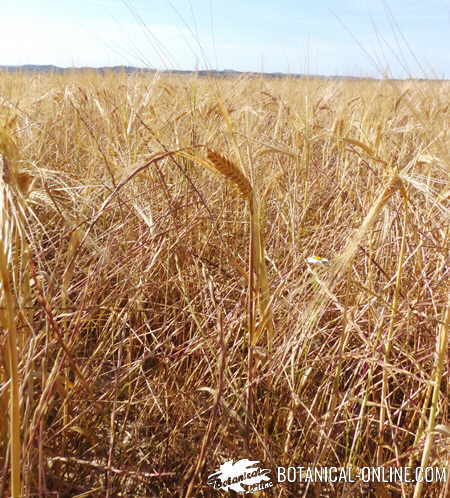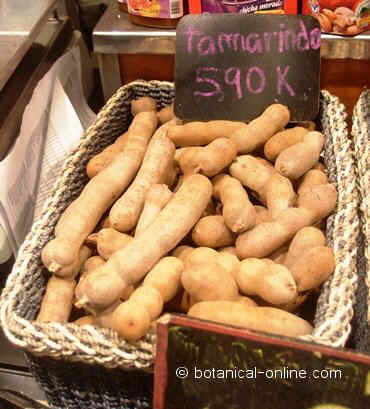Melon plants, history and species
Characteristics of melons
Melons (Cucumis melo) and watermelons (Citrullus vulgaris), belong to the Cucurbitaceae family, a large family where we find other edible plants, like squash, zucchini, cucumbers and other toxic plants as the squirting cucumber.
Melons are climbing plants with stems that can climb if given a proper support. Stems well rounded, with bristle that provide it a waxy texture. Stems, in cultivation, crawl on the floor and end up in tendrils. Melon stems can reach up to 4 m in length.
Leaves opposite, lobed. Flowers are completely male or female (monoecious), isolated and yellow.
The fruits of these plants are dark green or light green pepos with darker bands. They are called, like the plant, melons. The skin is thick and inside it we can find the melon pulp, ranging from green to white or yellow. In the interior of the meat there are many seeds, black, yellow or red. They are covered with a sticky substance.
History of melons
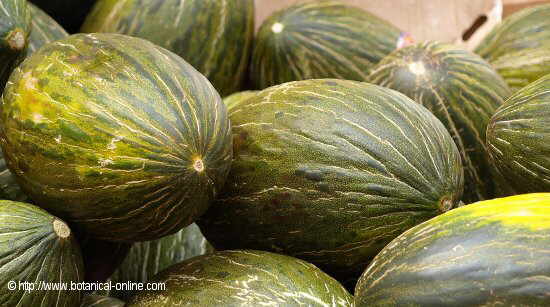
Photo of melons. Toad skin variety
The origin of melons is situated in southern Asia where they can be found in the wild. It seems that the come exactly from Iran where they spread to Egypt.
References of this fruit appear in Egypt in 2400 BC. Greek and Roman cultures made it popular throughout the Mediterranean. The sailors of the sixteenth and seventeenth centuries spread its cultivation in America where it found many places with a suitable climate to be cultivated.
How were melons like formerly?

Drawing of a melon with a fruit, leaves and stem
Originally melons were very different as we know them now. Derived from wild species, their size did not exceed that of an orange. Over time larger varieties appeared up to the present.
Species of melons
The main species of melons we have can be included into two categories:
- Summer melons
- Winter melons:
Species and varieties of summer melons
- Toad skin melon (Santa Claus melon): having dark green stripes on a lighter background. It is the most consumed in Europe along with the Gaul.
- Category melon: Like the toad skin melon, it is a mediumsized melon over half a kilo and a kilo and a half.
- Cantaloupe melon, originally from Armenia, but it took its name from the region where it was first cultivated in southern Europe, a town near Rome, called Cantalupo. It is characterized by a skin with netlike markings and yellowish white pulp. The skin is rough. It is the most exported species along with honeydew, being most produced in the U.S..
- Hogen melon: The Israeli melon Hogen took the name of the colony where this variety was named. They are smaller than the others and its flesh is light orange.
- The Gaul melon: With a yellow rind and whitish pulp, this melon weights between 800 grams and 2 k. It is a very spherical variety.
- Charentais melon or Cavaillon melon: One of the best known and exported melon. Light green with darker green lines. It has a yellow sweet and aromatic meat. It is a French variety.
- Rock melon: It is an eggshaped melon. Together with the Early Sweet melon is a moscato variety.
- Early Sweet melon: A melon which, as its name suggests, appears very early and it is very sweet.
Species and varieties of winter melons
Among them, there are a number of varieties. They have thicker skin than summer varieties. The most important ones are:
- Tendral or winter melon: It is the most famous winter melon. This variety is grown in Spain. One of these melons can weight 3 kilos easily. It is characterized by a very dark green crust and a very white flesh.
- Honeydew melon: It’s yellow inside and outside. It has got a considerable weight, between 2 and 3 kilos.
Where to buy melons?
Melons are grown almost everywhere in the world provided that they have a warm and rainy climate. Among the major producing countries are: China, Turkey, United States, Spain and Iran with a production of over 60% worldwide.
Other major producing countries in the world are Brazil, Mexico, Costa Rica, Honduras, Dominican Republic, Venezuela, Ecuador and Guatemala in America; France, Romania and Italy in Europe and Morocco, Egypt and South Africa in Africa.
Melon production worldwide
Melon is one of the most consumed fruits, ranking fourth among fruits consumed worldwide, after oranges, bananas and grapes.
Is melon a fruit or a vegetable?
There is a big controversy over whether this food is a fruit or a vegetable. Considering its texture, size and richness in natural sugars, it could be included within the fruits group. According to the type of plant it grows from, others believe it to be a vegetable.
Regardless of how we want to consider it, the real fact is that it is a popular food used in cooking around the world and with great edible and medicinal properties as we can see in the other pages of this article
![]() More information on melon.
More information on melon.

